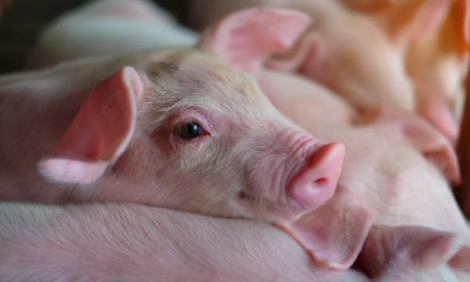



Daily Walking Swine Nursery-Growing-Finishing Barns
Regardless of whether a caretaker is walking a nursery, growing-finishing, or wean-to-finish barn, the facility has to be observed and evaluated at the individual pig level, pen level, and barn level, according to Don Levis, Worldwide Swine Consultancy writing for the Pork Information Gateway.The main reason for walking a barn is to identify problems, determine why the problem is occurring, and take action to solve the problem.
A walk-through requires a caretaker to make observations, listen to sounds, smell odours, feel/take room temperatures, measure relative humidity, and touch objects.
The morning walk-through is usually more thorough because of the detailed observation of each individual animal, feeding system, watering system, and environment.
The afternoon walk-through is less intense and mainly involves an evaluation of animal comfort, water availability, feed availability, and adequate ventilation. Caretakers need to apply their knowledge to solve the problems.
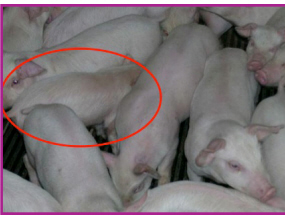
Objectives
To provide caretakeswith information on how-to look for factors that may be a problem at the individual pig level, pen level, and barn level while walking through a barn.
Individual Pig Level
Regardless of how many total pigs are housed in the barn, discipline yourself to quickly evaluate each individual pig instead of a group of pigs.
It has been reported that most caretakers can walk a 1,000-head growing-finishing barn (under normal disease conditions) and visually inspect each individual pig in approximately one hour [1].
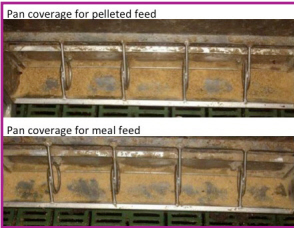
- Enter the barn very slowly to not disturb the pigs and assess whether the lying behaviour of pigs indicates comfort or stress. Pigs are social creatures and often lie touching each other but “piling” indicates stress. Also, assess air quality by subjectively determining the humidity level, smelling for odours such as ammonia and air movement.
- Enter the pens and inspect each pig from nose to tail in a quick manner for: (a) body condition, (b) body injuries, (c) bright open eyes, (d) ears without injuries or parasites, (e) skin and hair should be smooth, clean, flat and uniform, (f) tail should be without injuries, (g) swollen joints, (h) ability to walk in a normal manner, and (i) signs of diarrhoea [2]. The pigs should be inquisitive while caretaker walks in the pen.
- Identify and move injured/sick pigs to a hospital/relief pen for treatment and special care as soon as possible after identification.
- Ensure sick/injured pigs are receiving the designated treatment protocol in a timely manner.
- Identify non-competitive/fall-behind pigs (Picture 1) and move them to a fallout pen.
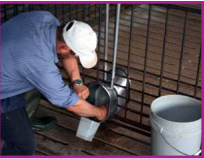
Pen Level
The pen is evaluated for items within the pen that can detrimentally affect feed intake, growth, health, and wellbeing of the animals.
- Look in each feeder to ensure the feeder has proper appropriate amount of feed and that the feed is clean.
- Look in the trough of each feeder to ensure feeder is adjusted correctly (Picture 2).
- Evaluate whether the height and water flow rate (nursery phase: 70 seconds/pint; grower and finisher phase: 50 seconds/pint) of nipple/bowl drinkers is adequate for the size of pigs in the pen. Water flow rate can be easily measured (Picture 3). Nipple drinkers should be located at shoulder height of pigs.
- Inspect the floor of the pen for excessive wetness, accumulation of manure, and signs of diarrhoea.
-
Look at the pen partitions for damage that result in holes in the partition or bent rods that can injure pigs due to sticking out into the pen.Table 1. Space allocation for fully slatted barn [3] Body weight (lb) Floor space (sq. ft./pig) 50 2.9 100 4.6 150 6.1 200 7.3 250 8.5 300 9.6 - Evaluate whether each pig in the pen has adequate floor space (Table 1). Room temperature does influence space requirements.
- Look at the animals in each hospital pen to determine whether the pen is providing a warm, dry, draft-free environment for sick and injured pigs.
- During summer months, inspect the animal cooling system.
Barn Level
The identified problem may be corrected at the time of the walk-through or later in the day.
- Record the indoor air temperature from hanging thermometers at various locations within the building.
-
Determine whether the barn temperature provides comfort for the number of pigs in the barn, age of pigs, and season by observing their breathing and lying behaviour. (Pictures 4 and 5)
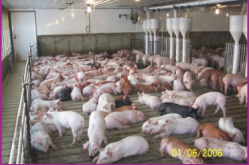
Picture 4. Comfortable pigs. Photo courtesy of Dr. Steve Pohl - Identify “hot spots” in the barn by continuous awareness of temperature changes felt.
- Look for signs of high relative humidity (wetness on ceiling, walls, or equipment).
- Evaluate whether the barn has abnormal smells/odours (high ammonia) and dust level.
- In a naturally ventilated barn look at all air inlets, air outlets, curtains, and sidewall doors to determine whether they are set in the correct position for proper air movement. There may be a need to determine whether the automated controllers are properly working.
- Look at all minimum wall ventilation fans to ensure they are properly working.
- Ensure all ventilation fans assigned to operate at the current barn temperature are working.
- Look at the shutters of non-running fans to ensure they are correctly closed.
-
Look at all the air inlets to ensure they are working correctly for the current room temperature.
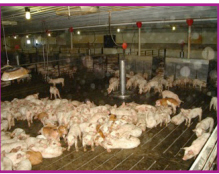
Picture 5. Chilled pigs. Photo courtesy of Dr. Steve Pohl - If the barn has sidewall curtains, observe whether the curtain is at the correct location for the current temperature. It may be essential to determine whether the curtains are operational.
- Look for sagging curtains and holes in closed sidewall curtains.
- Look for cracks in the side walls during winter that allow cold air to enter and form ice on the walls.
- Look for cleanliness on both sides of fan blades and shutters. Ensure shutters are properly working.
- Look at the entire feed delivery system to ensure it is correctly working.
- Listen for any odd sounds from fans, augers, and heaters.
- With respect to the time of day and season of the year, observe the evaporative pad cooling system for dry spots and feel around the outer edge and between pads for air leaks.
- Ensure the evaporative pad cooling system is set to start operating at 78°F in growing-finishing barn.
- Measure speed of air coming through the cool cell with an air flow meter. If the cell is working correctly, the maximum speed should be 400 feet per minute.
- If spray cooling is used, inspect the system to determine if it is working properly.
- Look in the manure pit to determine whether the pit is too full for proper functioning of pit fans and air movement. Ensure the pit fans are running.
- Look in pull-plug manure pit to determine whether pit needs to be emptied.
- If the barn has an under-floor manure scraper, look in pit to ensure scraper is properly working.
References
1. Wideman G., Reimer D., and Otten J. 2012. Ten rules to optimize nursery-grow-finish productivity. In J. H. Smith (Ed.), Proc. London Swine
Conference-A time for change. Pages 163-171. http://www.londonswineconference.ca/proceedings/2012/LSC Proceedings2012.pdf
2. Gemus-Benjamin, M. and Bratton, A. 2014. Identification of the sick or compromised pig. http://www.porkgateway.org/FileLibrary/PIGLibrary/
Factsheets/Identification %20of%20the%20Compromised%20Pig%2004-05-02.pdf
3. Brumm M.C. 2006. Space Allocation Decisions for Nursery and Grow-Finish Facilities. http://www.porkgateway.org/FileLibrary/PIGLibrary/
Factsheets/09-02-06g_c052006.pdf
March 2015








